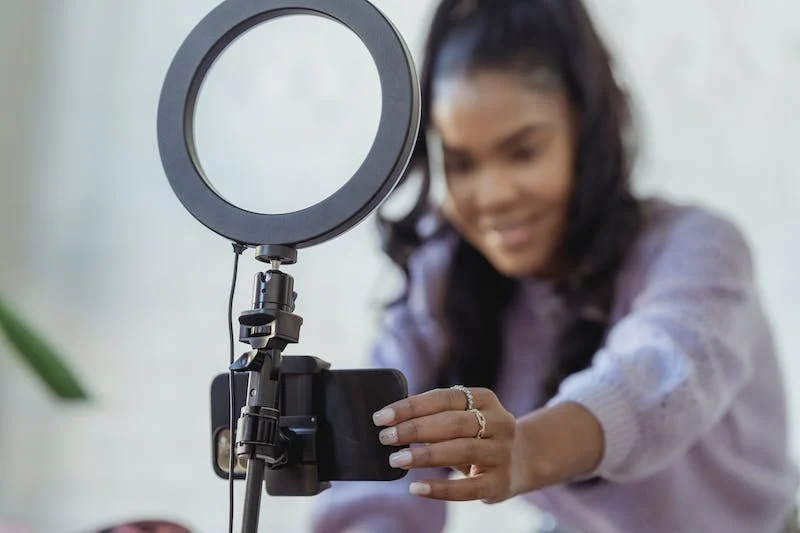The Evolution of Digital Marketing in Pharmaceutical Industry
A decade ago, the healthcare landscape was vastly different, with traditional approaches to promote their products and engage with healthcare professionals and consumers. By deploying sales representatives to meet healthcare professionals in person, distributing promotional materials and even using print media to advertise, we believe it has been effective in the past. But over the years, the pharmaceutical industry has evolved dramatically, propelled by the advent of digital technologies and shifting consumer behaviors. In addition, the pandemic has prompted companies to operate in different models – the rise of virtual pharma. There is no doubt that the need for digital marketing has become more essential than ever.
What’s The Digital Marketing Trends
Social Media Marketing
Before that, let’s start with some numbers:
- In Malaysia, there are 28.68 million social media users aged above 18 in January 2024 (Source: Data Reportal).
- 85.4% of Malaysia’s total internet user base use at least one social media (Source: Data Reportal).
- In 2024, the total number of social media users in Malaysia is equivalent to 83.1% of the total population (Source: Data Reportal).
The increased usage of social media presents new opportunities for businesses to expand their industries, especially in the pharmaceutical industry. Businesses nowadays move into social media for advertising. A study found that 77% of businesses use social media to reach customers. Social media is not just a platform to engage with patients or healthcare providers, but also a powerful channel to share educational content about various health topics, medical conditions, treatment options, and lifestyle recommendations.
So, what are the social media guidelines for you to take note of ?
In Malaysia, no pharmaceutical product is allowed to be advertised unless the necessary regulatory approval for marketing for its use has been obtained due to the safety concern. You must be mindful of wordings otherwise your advertisements would get banned. “Hanging” comparatives, which simply declare that a product is “better or stronger,” should not be used for advertising. Nevertheless, you are still permitted to share information impartially on social media as long as you follow PhAMA Code of Practice.
How Pfizer Uses Social Media?
Like many pharmaceutical companies, Pfizer executes social media marketing with careful consideration of regulatory guidelines, education purpose and brand awareness. In 2020, Pfizer has spent US$55 million on social media marketing. Pfizer leverages social media platforms to share educational content about diseases, treatments, and healthcare issues, especially during Covid-19. Through social media ads, Pfizer hopes to promote awareness about health concerns and empower patients to make informed decisions about their health. Apart from education purposes, Pfizer often shares updates on medical research, clinical trials, and treatment guidelines to engage with healthcare professionals. This engagement helps build relationships with key stakeholders in the healthcare industry and strengthens Pfizer’s position as a leader in pharmaceutical innovation.

Influencer Marketing
The arrival of the pandemic in 2020 has undoubtedly caused a significant transformation in the business world across various industries. Integrating influencers into digital marketing strategies has emerged as a significant force in the digital world, reshaping how brands connect with their target audiences and driving impactful results.
In pharmaceutical industry, it is always challenging to build trust and credibility with general public while encountering safety concerns in healthcare. By leveraging the power of influencers who have related expertise in health, wellness or related topics, you can amplify their messaging and establish trust with your target audience. Moreover, influencers can share personal stories, experiences, and insights related to their own health journeys, helping to destigmatize certain conditions and encourage proactive healthcare management.
Best Practices You Should Bear In Mind
Find A Right Influencer
You should consider the relevant connection between the influencer and your company. If you find an influencer that is totally from a different industry, it is just pouring money down the drain. Partnering with an influencer whose audience aligns with your target demographic and is relevant to your industry, it is a higher chance to reach potential customers who are more likely interested in your company. The content they produce is more natural and authentic by using their own way to resonate with their audience and align with your company’s messaging.
Content Authenticity
Pharmaceutical companies are highly regulated and any content that is produced by influencers must be accurate and authentic without any exaggerated claims or misleading messages. You should collaborate closely with your influencer to review and approve content to ensure compliance with regulatory requirements and brand guidelines.
Be Transparent
In pharmaceutical industry, transparency is essential to maintain trust and credibility with the audience. Influencers must clearly disclose their relationship with the pharmaceutical companies and the nature of the engagement, such as sponsored content or brand ambassadorship.

Video Marketing
In an era dominated by digital communication, the pharmaceutical industry is increasingly turning to video marketing as a powerful tool. From explainers to testimonial videos, pharmaceutical companies are leveraging video content to address common concerns and foster a sense of empowerment among patients. A study from Wyzowl discovered that 84% of individuals bought a product or service from a brand after watching online videos.
Patients now will seek answers to health related questions before visiting a doctor or purchasing healthcare products. Topics related to healthcare are frequently complex and hard to understand. These difficult subjects are made more approachable for the typical customer by the use of video content. Unlike text-based content, it combines audio and visual components to provide viewers a dynamic and compelling experience. It simplifies complex medical information in an intelligible way when visual storytelling is used in videos to capture viewers’ attention and keep them interested throughout the content.
“Marketing is no longer about the stuff that you make but about the stories you tell.”
Seth Godin
How Should You Approach in the Right Direction ?
1. Keep it short and simple.
For pharmaceutical companies, the video is normally under 3 minutes and more likely to have longer attention spans, especially for healthcare professionals. Your video should focus on key messages or include links to additional videos, websites, downloadable resources to find more detailed information.
2. Make sure to add captions
Verizon Media has reported that 92% of viewers watch videos with sound off and 50% rely on captions. You should include subtitles and make sure any visual information is accompanied by either audio or written descriptions.
3. Focus on emotionally-driven video content
Make use of emotion to evoke empathy in your audience while sharing real-life stories to create an emotional connection with them. But, make sure to strike a balance between emotional appeal and rational decision making.
The Bright Future of Omnichannel Marketing
As the pharmaceutical industry continues to evolve in the digital age, the concept of omnichannel marketing is poised to revolutionize the way brands engage with patients and healthcare professionals. Omnichannel marketing, a comprehensive strategy that focuses on providing customers with consistent and integrated experiences across several channels and touchpoints.
According to Date Reportal, the average number of social media platform users access is 7.9 every month. You can maximize your reach across multiple channels, including websites, social media, mobile apps, email, SMS, and telehealth platforms. Patients can interact with pharmaceutical brands through their preferred channels, receiving consistent and personalized messaging at every touchpoint.
What’s the difference between “Multichannel” and “Omnichannel”
In a multichannel approach, there may not be consistency or integration across the channels as each one functions separately. Customers may have different experiences and interactions depending on the channel they use.
In contrast, omnichannel marketing takes a more unified and seamless strategy to engage customers through a variety of platforms. All of the channels are linked to one another and function as a single, cohesive experience for customers. There will be no interruptions or inconsistencies when clients switch between channels.
There is no “ best” strategy for your company and it should be aligned with your business goal. It also depends on your resources, size of company and preference of your target customers. Multichannel may be more workable and realistic for companies with fewer resources or those that are just beginning their omnichannel journey, even though omnichannel offers a more united and integrated approach to consumer involvement. Conversely, if your goal is to enhance the overall consumer experience, omnichannel strategy works well to help you enhance the bigger picture.

Final Thoughts
Digital marketing in the pharmaceutical realm presents a unique opportunity to transcend traditional boundaries, reaching patients and healthcare professionals on a global scale. Let’s leverage technology not as an end in itself, but as a means to enhance human connection, improve patient outcomes, and ultimately, make a lasting difference in the lives of individuals around the world.


